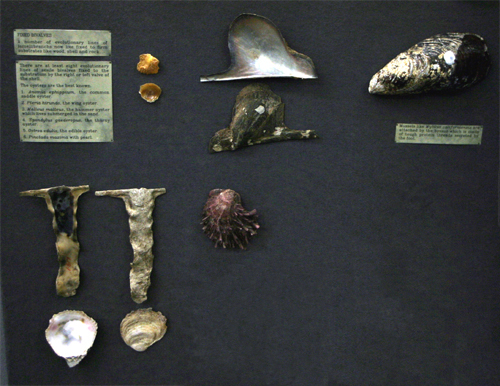
SURFACE DWELLING LAMELLIBRANCHS | |
A number of evolutionary lines of lamellibranchs live fixed to firm substrates – peat, wood, shell and rock. Species of Mytilus and Modiolus attach by the byssus, which is made of tough protein threads secreted by the foot. Giant clams, Tridacna spp., live hinge side down initially attached by byssal threads. Some species keep the byssus; others lose it and rest on the bottom due to the weight of the shell. The great size of these molluscs, which may be over a metre long, has been attributed to the extra nutrients they receive from the symbiotic algae that live in their mantle folds. At least eight lineages of sessile bivalves are fixed to the substratum by the right or left valve of the shell. Most farmiliar are:
|
 |






